- People Heart & Healthcare Center
- peoplehearthealth@gmail.com
- (91) 9772365365
Medical Tests / Diagnosis
ECG
TMT
2-D ECHO Cardiogram
CT-Coronary Angiography
Stress / Thallium Test
ECG (Electrocardiography)
This is the basic test to detect heart disease and heart attack ECG is the process of recording the electrical activity of the heart over a period of time using electrodes placed on the skin. These electrodes detect the tiny electrical changes on the skin that arise from the heart muscle's electrophysiologic pattern of depolarizing during each heartbeat. Changes in ECG occurs only when the patient is in chest-pain (angina) or in heart-attack.
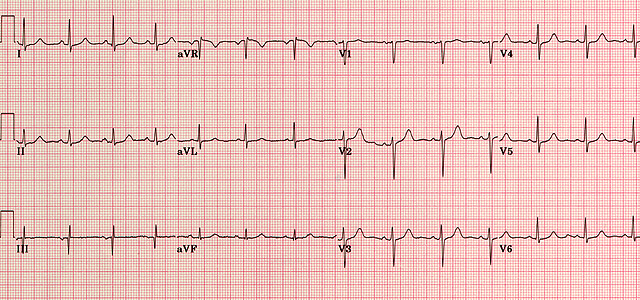
TMT (Treadmill Test)
In this, the patient walks on a treadmill and gradually increases the speed to produce pressure on the heart. Patient's vital parameters are recorded and monitored. The reaction to stress is produced either by exercise or drug stimulation. The stress test compares the circulation of blood in the heart when the patient is resting and when he is under optimum physical pressure. Doctor's analyses test reports.
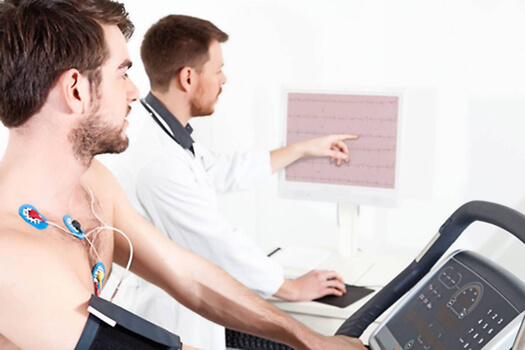
2-D ECHO Cardiogram
An echocardiogram, often referred to as a cardiac echo or simply an echo, is a sonogram of the heart. Echocardiography uses standard two-dimensional, three-dimensional, and Doppler ultrasound to create images of the heart. Echocardiography has become routinely used in the diagnosis, management, and follow-up of patients with any suspected or known heart diseases. It is one of the most widely used diagnostic tests in cardiology.
It can provide a wealth of helpful information, including the size and shape of the heart (internal chamber size quantification), pumping capacity, and the location and extent of any tissue damage. An echocardiogram can also give physicians other estimates of heart function, such as a calculation of the cardiac output, ejection fraction, and diastolic function (how well the heart relaxes). Echocardiography can help detect cardiomyopathies.
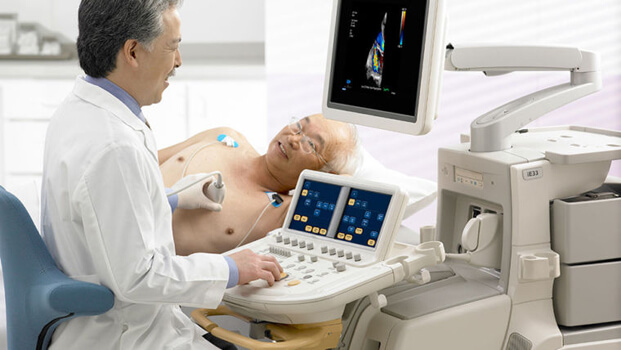
Ct-Coronary Angiography
CT coronary angiogram is an effective imaging test used to identify the plaque depositions in the arteries associated with the heart. This imaging test does not use any type of catheter insertion to the heart. Instead, the CT coronary angiogram uses the powerful X-ray equipment to produce pictures of the blood vessels and the heart.
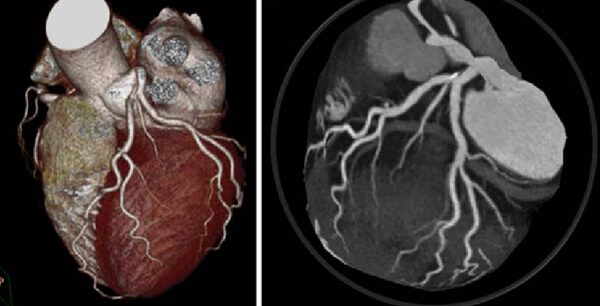
Know Your Heart without any Invasion
Cardiac computed tomography, or cardiac CT, is a painless test that uses an x-ray machine to take clear, detailed pictures of the heart. This common test is used to look for problems in the heart.
Cardiac CT is a common test for finding and/or evaluating
- Coronary Heart Disease(CHD).
- Problems with heart function and heart valves.
- Pulmonary Embolism (PE).
- Problems in the pulmonary veins.
- Pericardial disease.
What to Expect Before Cardiac CT?

Your doctor will tell you how to prepare for the cardiac CT scan. People usually are asked to avoid drinks that contain caffeine before the test. Normally, you're allowed to drink water, but you're asked not to eat for 4 hours before the scan. If you take medicine for diabetes, talk with your doctor about whether you'll need to change how you take it on the day of your cardiac CT scan.
The CT scanner is a large machine that has a hollow, circular tube in the middle. You will lie on your back on a sliding table. The table can move up and down, and it goes inside the tunnel-like machine. The table will slowly slide into the opening in the machine. Inside the scanner, an x-ray tube moves around your body to take pictures of different parts of your heart. A computer will put the pictures together to make a three-dimensional (3D) picture of the whole heart. A cardiac CT scan usually takes about 10 – 15 minutes to complete.
What to Expect After Cardiac CT?
After the cardiac CT scan is done, you'll be able to return to your normal activities. You will get the reports along with X-Rays and CD after 4 -5 hours or on the next day.
CT Coronary Angiography is available in 64, 128, 256, 500 and 1000 slices, it is latest cost effective alternate of Traditional angiography.
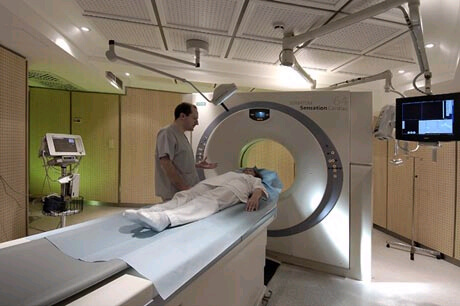
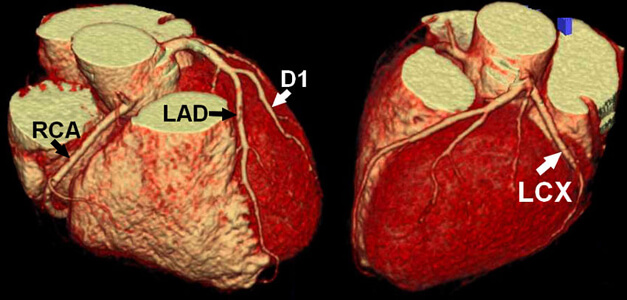
Stress-Thallium Test (Nuclear Stress Test)
A nuclear stress test measures blood flow to your heart at rest and while your heart is working harder as a result of exertion or medication. The test provides images that can show areas of low blood flow through the heart and damaged heart muscle.The test usually involves taking two sets of images of your heart — one while you're at rest and another after you heart is stressed, either by exercise or medication.
You may be given a nuclear stress test, which involves injecting a radioactive dye into your bloodstream, if your doctor suspects you have coronary artery disease or if a routine stress test didn't pinpoint the cause of symptoms such as chest pain or shortness of breath. A nuclear stress test may also be used to guide your treatment if you've been diagnosed with a heart condition.
Patients Can Be Treated With EECP Treatment In Following Diseases
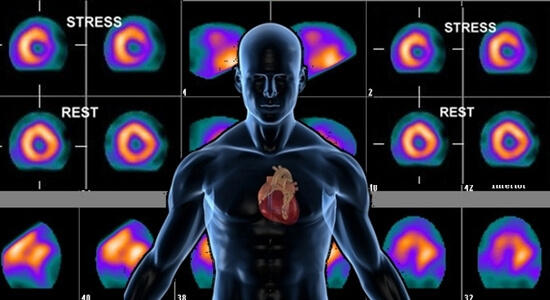
Why Stress Test
- If doctor suspect your heart isn't getting enough blood flow (oxygen) when it's under stress (exercise)
- If you have chest pain or worsening angina
- If you've had a previous heart attack
- To check how well medications are working
- To determine whether or not a procedure or surgery was successful
- To determine if your heart is healthy enough to start an exercise program
The Thallium Stress Test Show
- If the heart muscle is damaged or scarred from previous heart attacks.
- How well the coronary arteries supply the heart with blood (myocardial perfusion)
- The size of the heart chambers
- How effectively the heart pumps (ventricular function)
